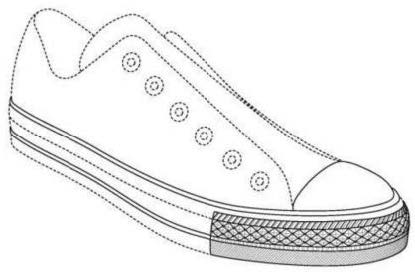The following post comes from Jack Ring, a rising 2L at Scalia Law and a Research Assistant at C-IP2. Click here for a related post.
 I. INTRODUCTION
I. INTRODUCTION
On July 13, 2022, the Federal Circuit affirmed the denial of Thales DIS AIS Deutschland GMBH’s (Thales) motion to enjoin Koninklijke Philips N.V. (Philips) from proceeding in a parallel investigation against Thales at the United States International Trade Commission (ITC).[1] This dispute, stemming from SEP licensing negotiations dating back to 2015, seemed poised to be a vehicle to set SEP policy. It offered an opportunity for the District Court and the Federal Circuit to prevent a party from seeking an exclusion order from the ITC when a court was asked to set FRAND rates. It further offered the ITC the opportunity to apply its public interest factors broadly to the same ends. However, all three courts that heard this dispute sidestepped the policy debate.
On the same day in 2020, Philips brought a district court case in Delaware[2] and an ITC investigation[3] against Thales asserting the same four essential patents. In response, Thales moved for a preliminary injunction to prevent Philips from proceeding at the ITC. Thales claimed inter alia that the ITC investigation was causing irreparable harm to its business by disrupting business and deterring customers. Chief Judge Colm F. Connolly, presiding in Delaware, denied Thales’ preliminary injunction, reasoning that Thales’ claims failed to illustrate irreparable harm.
While Thales’ motion sought to enjoin Philips, granting the preliminary injunction would have effectively stripped the ITC of its jurisdiction. This would have been at odds with the ITC’s statutory scheme. As Chief Judge Connolly acknowledged during his ruling on the motion, Congress authorized patentees to pursue ITC and district court proceedings on parallel tracks. Chief Judge Connolly noted the potential policy issues with granting SEP owners exclusion orders, but he reasoned that he was not the one who should make policy, instead deferring to Congress or a higher court.
On appeal, the Federal Circuit agreed, ruling that Thales failed to present evidence of a likelihood of irreparable harm beyond conclusory customer concerns. The Federal Circuit’s opinion came just seven days after the ITC’s final determination finding no violation of Section 337 and multiple claims of the Asserted Patents invalid.
This appeal and the ITC investigation seemed poised to tackle those big policy issues Chief Judge Connolly declined to answer. However, the subsequent rulings avoided any policy decisions. The Federal Circuit’s narrow holding did not discuss any policy issues, solely focusing on the lack of irreparable harm. The ITC’s finding of no violation meant it needed not consider the statutory public interest factors. The Commission’s prior request for public interest statements request garnered a statement from Chair Lina Khan and Commissioner Rebecca Slaughter of the Federal Trade Commission (FTC), which lobbied the ITC to deny relief to any Complainants asserting patents that are subject to FRAND-setting litigation in other forums.
II. DISTRICT COURT ACTION
Philips brought two district court cases in Delaware and an ITC investigation against Thales and three of its customers on December 17, 2020.[4] The ITC investigation, Inv. No. 337-TA-1240 (the “ITC investigation”) and one of the Delaware cases, C.A. No. 20-1713 (the “District Court Action”) shared the same asserted patents, which Philips claimed are essential. Those patents are U.S. Patent Nos. 7,944,935, 7,554,943, 8,199,711, and 7,831,271 (collectively, the “Asserted Patents”). The second district court case brought by Philips asserted six additional, non-essential patents, against the same parties, C.A. No. 20-1709[5].
Philips’ complaint sought declaratory judgment setting worldwide FRAND licensing terms and alleged infringement of the Asserted Patents. Thales counterclaimed, alleging breach of contract of Philips’ contractual duties to the European Telecommunication Standards Institute (ETSI)[6] and seeking declaratory judgment setting FRAND terms.[7] Contemporaneous with its answer, on March 5, 2021, Thales filed a motion for a preliminary injunction to enjoin Philips from pursuing the ITC investigation. Thales claimed the ITC action divested the district court of its authority and was an attempt to extract a supra-FRAND royalty rate.
Thales argued it was likely to succeed on its breach of contract claim in addition to its declaratory judgment claim because both parties requested the same relief, a FRAND rate determination by the court. On irreparable harm, Thales claimed imminent risk of losing market share, customers, sales, and business opportunity, as well as business disruption, as a result of Philips’ seeking an ITC exclusion order. Thales clarified that the irreparable harm was “the uncertainty and the cloud hanging over our head from now until [the ITC rules].”
At the preliminary injunction hearing in May 2021,[8] Chief Judge Connolly, ruling from the bench, denied Thales’ motion. Chief Judge Connolly found the irreparable harm evidence conclusory and that litigating on parallel tracks in the ITC and District Court did not constitute irreparable harm. Chief Judge Connolly also ruled that Thales had not established likelihood of success. Following denial of the preliminary injunction on May 21, 2021, Thales noticed an appeal to the Federal Circuit on June 21, 2021. The Delaware Action was stayed and administratively closed on August 20, 2021, pending resolution of the ITC investigation.
III. ITC INVESTIGATION
While Thales and Philips litigated in Delaware, the ITC investigation proceeded at full pace. As discussed above, Philips filed its complaint at the ITC on December 17, 2020, the same day as the District Court Action. The complaint asserted the same four patents against Thales and the same three customers plus Telit Wireless Solutions, Inc. and Telit Communications PLC.[9] The Commission instituted the investigation on January 19, 2021.[10]
Following an evidentiary hearing in October 2021, Administrative Law Judge David Shaw found no violation in the Final Initial Determination (ID) on April 1, 2022. In addition to finding no violation, ALJ Shaw found multiple claims of the Asserted Patents invalid. On July 6, 2022, the Commission released a Notice of Determination reviewing certain findings, taking no position on many findings, and affirming portions of the ID. The Commission maintained the finding of no violation, and adopted only the following other findings:
(1) the asserted claims of the ’935 patent, the ’711 patent, the ’943 patent, and the ’271 patent are not infringed; (2) Philips did not satisfy the technical prong of the domestic industry requirement with respect to any of the four asserted patents; (3) claim 9 of the ’711 patent and claim 12 of the ’943 patent are invalid as indefinite; and (4) the asserted claims of the ’271 patent are invalid as indefinite and for lack of written description.
As part of its review, the Commission requested public interest statements from the public. One submission, from Chair Khan and Commissioner Slaughter of the FTC urged the ITC to utilize its Public Interest statute to deny relief to any Complainants asserting patents that are subject to FRAND-setting litigation in other forums.[11] In light of the finding of no violation, the Commission did not need to consider the effect of the proposed remedy on the public interest as required by statute.[12]
IV. APPEAL AT THE FEDERAL CIRCUIT
On July 13, 2022, one week after the ITC released its Final Notice, the Federal Circuit affirmed the District Court’s denial of Thales’ preliminary injunction and awarded costs to Philips. Chief Judge Kimberly Moore’s opinion focused exclusively on Thales’ failure to show it was likely to suffer irreparable harm from Philips’ ITC action. Like Chief Judge Connolly, Chief Judge Moore found the evidence presented conclusory. Thales did not meet its burden because it failed to present evidence that it lost customers, had customers delay purchase, or struggled to acquire new business because of the ongoing ITC proceedings. Rather, the ITC investigation caused customers to voice concerns or express doubt. The Court reasoned that “This type of speculative harm does not justify the rare and extraordinary relief of a preliminary injunction.”
V. TAKEAWAYS
While this dispute seemed prepared to make policy waves in the SEP space, there will be future cases that give rise to similar issues. Even now, Apple and Ericsson are litigating SEPs at the ITC and in District Court.[13] That dispute may reach some of the policy questions raised in this case and specifically in Chair Khan and Commissioner Slaughter’s Public Interest Statement from this investigation.
[1] Koninklijke Philips N.V. v. Thales DIS AIS USA LLC, No. 2021-2106 (Fed. Cir. July 13, 2022).
[2] Koninklijke Philips N.V. v. Thales DIS AIS USA LLC, C.A. 20-1713 (D. Del.).
[3] Certain UMTS & LTE Cellular Communications Modules & Products Containing the Same, Inv. No. 337-TA-1240 (USITC).
[4] The customers include CalAmp Corp., Xirgo Technologies, LLC, and Laird Connectivity, Inc.
[5] Koninklijke Philips N.V. v. Thales DIS AIS USA LLC, C.A. 20-1713 (D. Del.).
[6] Both Philips and Thales are members of ETSI, a standard setting organization for digital cellular communications.
[7] Thales USA answered separately on April 5th and did not include counterclaims. Thales USA moved to be severed and dismissed as misjoined party under Fed. R. Civ. P. 21 on April 5, 2021.
[8] The transcript of the May 21, 2021, hearing can be found attached to Philips’ Opening Brief to the Federal Circuit.
[9] Philips also asserted the four essential patents against Telit in Delaware District Court, Koninklijke Philips N.V. v Telit Wireless Sols., Inc., C.A. 20-1711 (CFC) (D. Del.).
[10] 86 FR 7305 (Jan. 19, 2021).
[11] https://www.ftc.gov/system/files/ftc_gov/pdf/Written_Submission_on_the_Public_Interest_if_Chair_Khan_and_
Commissioner_Slaughter_to_ITC.pdf.
[12] 19 U.S.C. §§ 1337(d)(1), (f)(1).
[13] Certain Mobile Telephones, Tablet Computers With Cellular Connectivity, & Smart Watches With Cellular Connectivity, Components Thereof, & Products Containing Same, Inv. No. 1299 (USITC); Ericsson Inc. v. Apple, Inc., C.A. 6:22-cv-60 (W.D. Tex.).
 CPIP Founders
CPIP Founders 